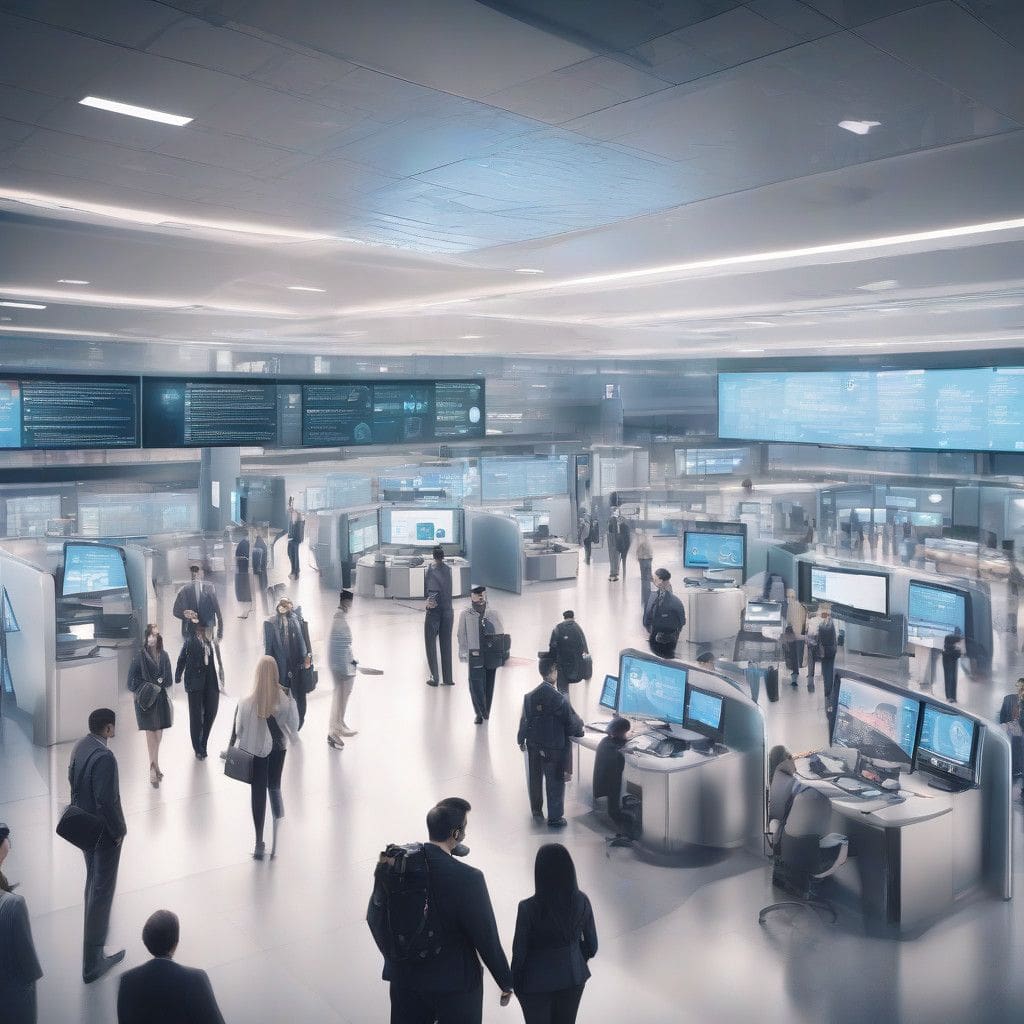SITA, a global provider of IT and telecommunications services for the aviation industry, has announced the launch of its advanced Network Access Control (NAC) solution, specifically designed to bolster the security of airport and airline digital infrastructures. This innovative development comes at a critical time when digital security threats are escalating, and airports are navigating increasingly complex operational environments.
The SITA Managed NAC solution aims to address these vulnerabilities by providing comprehensive protection for critical communication systems and user data. As airports become more reliant on interconnected digital networks, safeguarding these networks against unauthorized access and breaches is pivotal. The SITA Managed NAC effectively shields these networks by employing advanced security protocols tailored to the unique needs of airports.
A key feature of this solution is its ability to manage both Local Area Network (LAN) and Wireless LAN operations effectively. It introduces additional layers of authentication and network segmentation, which not only adhere to industry standards but also enhance the security of passenger-related systems. Thorough compliance with security protocols is increasingly important, especially as regulatory bodies, such as the US Transportation Security Administration (TSA) and the Airports Council International (ACI), emphasize the need for robust cybersecurity measures in the aviation sector.
What sets SITA’s NAC solution apart is its granular control over network access. It provides detailed logging capabilities, which allow for real-time monitoring of network activity. This advanced feature enables airport operators to quickly identify and quarantine non-compliant devices, further mitigating the risk of breaches and ensuring the compliance of all connected devices. Such proactive measures contribute significantly to maintaining operational efficiency while adhering to regulatory demands.
Furthermore, SITA Managed NAC integrates seamlessly with existing systems, notably its SITA Campus Network product. By leveraging Cisco’s Identity Services Engine (ISE), the solution enforces identity-based access controls and policies, embodying a Zero Trust security model. This model continuously verifies and authorizes access requests, ensuring that only verified devices and users can access sensitive network segments. As cyber threats evolve, adopting a Zero Trust architecture becomes imperative for protecting critical infrastructure.
Real-time statistics demonstrate the effectiveness of enhanced NAC solutions. According to Cybersecurity Ventures, cybercrime damages are projected to reach $10.5 trillion annually by 2025, indicating an urgent need for robust defenses. The aviation sector, often targeted due to its critical infrastructure, must stay ahead of these threats through comprehensive security measures. SITA’s Managed NAC directly addresses this requirement, positioning airports not just as transportation hubs but as secure environments for both passengers and data.
In summary, SITA’s advanced NAC solution exemplifies a significant step forward in airport security, addressing the challenges associated with rising cybersecurity threats. By integrating cutting-edge technology with stringent security protocols, airports can better protect themselves against unauthorized access and potential breaches. As the aviation industry continues to evolve, the adoption of such innovative solutions is essential for ensuring safety, maintaining regulatory compliance, and safeguarding sensitive information.
With the increasing focus on cybersecurity, SITA’s initiative is both timely and essential, setting a new standard in the industry for airport security protocols. The dual focus on operational efficiency and rigorous security measures illustrates SITA’s commitment to providing secure technology solutions tailored to the unique needs of the aviation landscape.
SITA’s Managed NAC solution highlights the importance of proactive security measures in a world where digital threats are omnipresent and evolving. By implementing such advanced systems, airports can not only maintain operational integrity but also enhance the overall travel experience for passengers, assuring them that their safety and privacy are prioritized.












